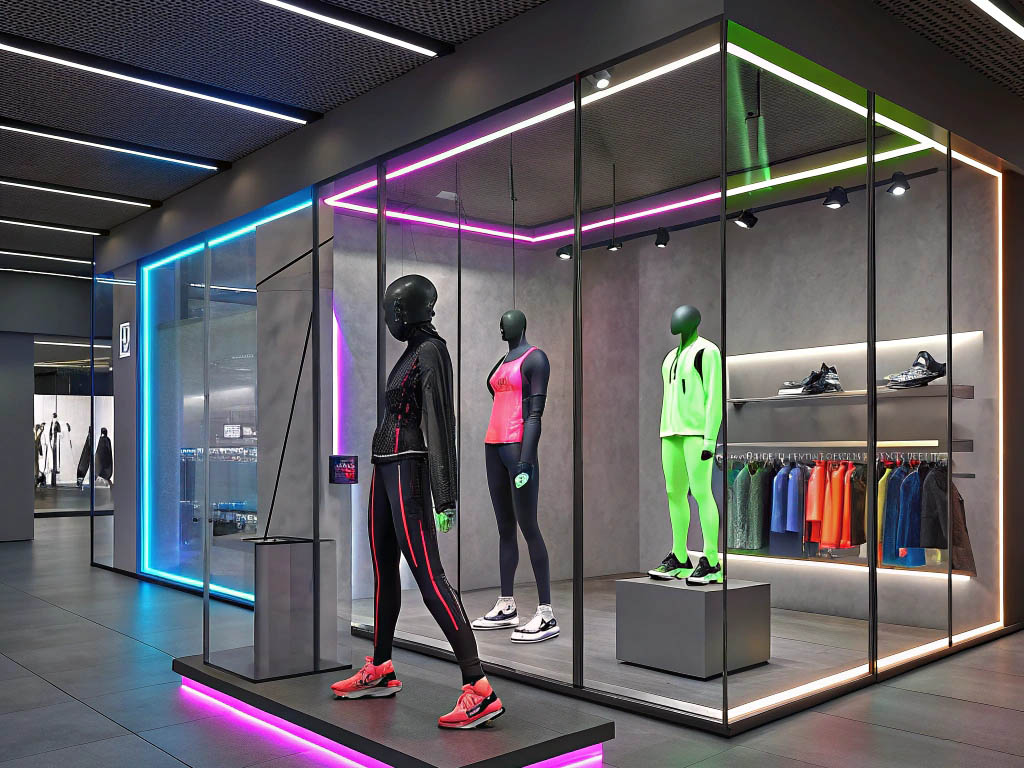The activewear market is packed with brands, from global giants to niche startups. With so many players, is there still room for new businesses?
The activewear market is highly competitive, but not fully saturated. While major brands dominate, niche markets and innovation continue to create opportunities for new players.
Some brands struggle to stand out, but others thrive by targeting specific customer needs. Let’s explore the state of the industry and where new opportunities exist.

How crowded is the activewear market?
Activewear has grown rapidly over the past decade. The rise of athleisure and health-conscious lifestyles has fueled demand.
The global activewear market1 is valued at over $400 billion, with steady growth. While competition is fierce, new trends and evolving consumer preferences create space for emerging brands.
Market growth vs. competition
Activewear brands are everywhere, but demand continues to rise. The market is expanding due to factors like increased fitness awareness and the shift toward casual, comfortable fashion.
Dominance of major brands
Nike, Adidas, and Lululemon hold a significant share. Their strong branding and marketing make it harder for new brands to break in.
The role of niche brands
Smaller brands succeed by focusing on underserved markets. Eco-friendly, size-inclusive, or sport-specific activewear brands attract dedicated customers.
What challenges do new activewear brands face?
Breaking into the activewear market isn’t easy. Many brands struggle to compete against established giants.
New brands face challenges like high production costs, brand recognition struggles, and fierce marketing competition. However, targeted strategies can help overcome these barriers.

High production costs
Creating high-quality activewear requires investment in premium materials and manufacturing. Many startups struggle with these upfront costs.
Brand recognition and customer trust
Nike and Adidas have decades of brand loyalty. New brands must work harder to gain trust and credibility.
Marketing competition
Advertising in the activewear space is expensive. Established brands dominate social media and influencer partnerships, making visibility difficult for newcomers.
Where are the opportunities in the activewear market?
Despite competition, opportunities still exist. The key is finding gaps in the market and serving unmet consumer needs.
Opportunities lie in sustainability, customization, and direct-to-consumer (DTC) models2. Brands that focus on innovation and niche markets can still succeed.
Sustainable activewear
Consumers are prioritizing eco-friendly materials and ethical production. Brands like Patagonia and Girlfriend Collective have built strong followings by focusing on sustainability.
Customization and personalization
Consumers want products tailored to their preferences. Brands offering personalized fit, colors, and performance features stand out.
Direct-to-consumer (DTC) advantage
Selling directly to consumers reduces costs and increases brand control. Companies like Gymshark have leveraged DTC strategies to build strong customer communities.
How do smaller brands compete with giants like Nike and Adidas?
Nike and Adidas dominate, but smaller brands still find ways to compete. Differentiation and brand identity are key.
Smaller brands compete by focusing on unique selling points, community engagement, and digital marketing strategies.

Finding a niche
Instead of competing head-on, smaller brands succeed by catering to specific customer groups. This could be plus-size activewear, maternity fitness wear, or technical gear for niche sports.
Leveraging influencer marketing
Smaller brands use micro-influencers and brand ambassadors to build credibility. Authentic endorsements resonate more than celebrity sponsorships.
Emphasizing quality and values
Consumers are looking for transparency and brand values. Ethical production, innovative materials, and direct brand communication help smaller companies build trust.
Will the activewear market continue to grow?
Despite concerns about oversaturation, the activewear market shows no signs of slowing down.
Activewear demand will continue growing due to lifestyle changes, fitness awareness, and technological advancements. Brands that evolve with consumer needs will thrive.
Growth of athleisure
Athleisure is no longer just a trend—it’s a lifestyle. Consumers continue to choose activewear for both exercise and everyday wear.
Advances in performance fabrics
Smart textiles, moisture-wicking materials, and sustainable innovations are driving demand for new products.
Expanding global markets
Emerging markets in Asia, South America, and Africa present new growth opportunities for activewear brands.
Conclusion
The activewear market is competitive, but not oversaturated. While major brands dominate, there is still room for innovation, niche marketing, and sustainability-focused businesses. Success depends on differentiation, strong branding, and adapting to consumer trends.













